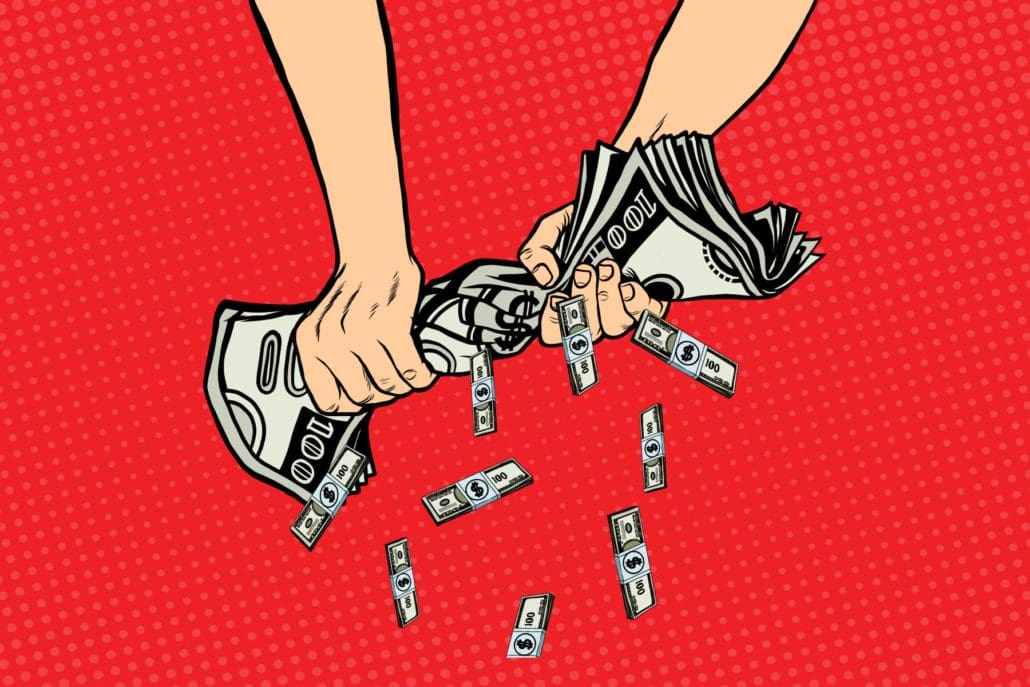The St. Patrick’s Day Economic Stimulus

Spring is finally here. Traditionally, spring symbolizes hope, renewal, and change. The warmer weather combined with the holidays of St. Patrick’s Day and Easter is a natural and recurring economic stimulant. Add in the spending of tax refunds as we transition through spring into the summer and there is even more reason to be bullish about the economy ahead of Q2.
The St. Patrick’s Day Economic Stimulus
There is a common misconception that St. Patrick’s Day has a minimal economic impact as some insist its celebration is primarily restricted to those of Irish heritage. Even the Irish are a bit shocked by the holiday’s massive economic impact. Few are aware that Ireland generates over €70 million of revenue in the five days between March 16 and March 20. The United States records slightly more than $5 billion during these five days.
The St. Patrick’s Day holiday steers money toward restaurants, bars, costume stores, hotels, retail stores, and a litany of other businesses. Though few know it, the world’s largest St. Patrick’s Day parade is held in Chicago as opposed to Ireland. The city of Chicago has held its massive parade for more than six straight decades. The city even goes to the extent of dying its river green in honor of the Irish. Chicago’s citywide St. Patrick’s Day celebration temporarily closes some businesses yet it also stimulates the local economy through elevated hotel room prices, beer sales, food sales, rideshare service, and additional forms of tourism spending.
According to Wallethub, slightly more than 56% of Americans celebrate St. Patrick’s Day. The average St. Patrick’s Day reveler spends nearly $40 on festivities, making the holiday rank in the top five of all “drinking days” in the nation. The takeaway from these figures is St. Patrick’s Day is a significant economic jolt for the United States economy as well as the global economy. Business owners, CPAs, wealth consultants, and others should take note of St. Patrick’s Day’s significance in the context of finance, sales, and operations and plan accordingly.
The Arrival of Tax Season
Though the federal government collected a record amount of tax revenue last year, it is worth noting that tax refunds were also up 11% in ’21. The refund hike is a significant increase over that of the prior year. In the ’21 tax filing season, the Internal Revenue Service issued nearly 130 million refunds, representing a 3% increase from the prior year, aggregating to an impressive $355 billion. The average refund increased $230 from the prior year, equating to an impressive 11.2% increase. Furthermore, refunds made through direct deposit were that much higher at $2,851 as compared to the $2,592 from ’20.
If the escalating tax refund trend continues in the year ahead, it bodes well for the economy. However, it must be noted larger tax refunds are generally construed as negatives in the context of personal finances as it indicates taxpayers are not properly sizing their tax withholding and estimating payments. After all, receiving even a dollar back from the federal government after filing taxes equates to an interest-free loan provided to Uncle Sam that could have been better used for investing or purchasing something of value.
It is quite shocking to learn the Government Accountability Office reports nearly 75% of taxpayers have too much money taken out of their paychecks, setting the stage for tax refunds in the spring. The silver lining to this statistic is the fact that those large tax refunds will inevitably be spent in the second financial quarter of the year, stimulating the economy all the more, serving as a rising economic tide that has the potential to temporarily lift all boats.
A Look at Q2
The second financial quarter of the year is likely to be a bullish one simply because there will be fewer headwinds than those present in the first quarter. The Omicron variant of COVID-19 is tailing off, the weather is improving and people will spend tax refunds at local businesses.
The Fed will likely continue to taper its asset accumulation through Q2 and beyond. Though there is the potential for interest rate hikes, the economy is strong enough to accommodate such a bearish move. Keep in mind, interest rates have been at historical lows for an extended period of time. Add in the fact that customers are flush with cash and there is even more reason for business owners to look forward to an active second quarter in ’22.
Though the stock market will undoubtedly have its fair share of laggards as we transition to the second quarter, there is reason for hope. Investors are likely to gravitate back to beaten-down tech stocks and possibly take some profits from value stocks with tangible earnings. Look for the second quarter of ’22 to get off to a hot start characterized by a bustling economy, a rebounding stock market, and cooling inflation that serves as a runway for a prosperous final nine months of the year.
Focus on Growth, This Spring & Beyond
Our veteran-owned and operated financial services firm is here to help entrepreneurs. Whether you are looking for M&A advisory services, business valuations, or value growth, you can benefit from our services. Reach out to us today to learn more about how we can help your business.
